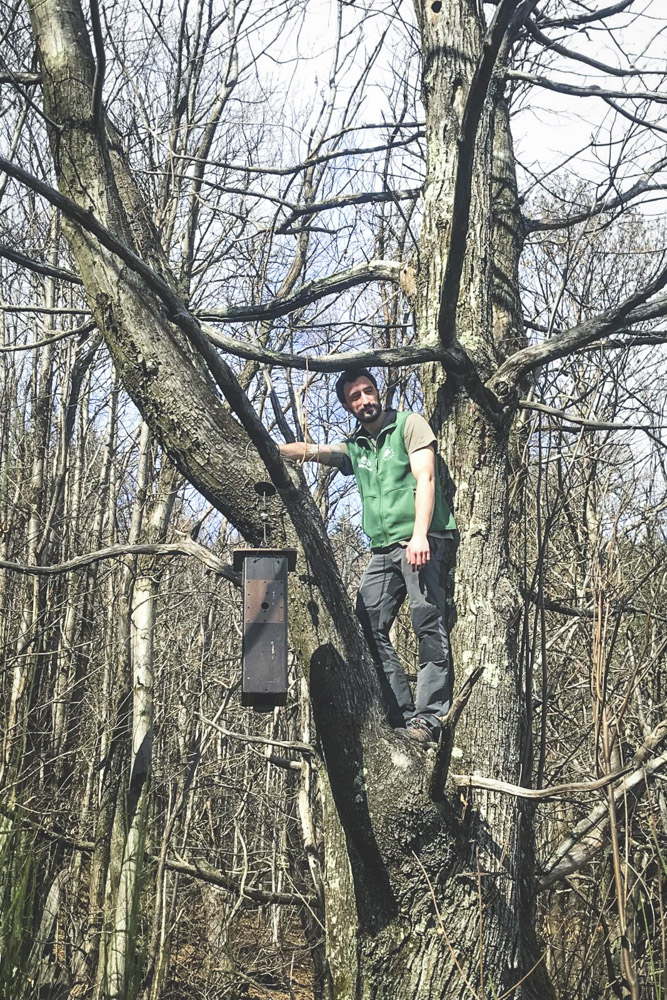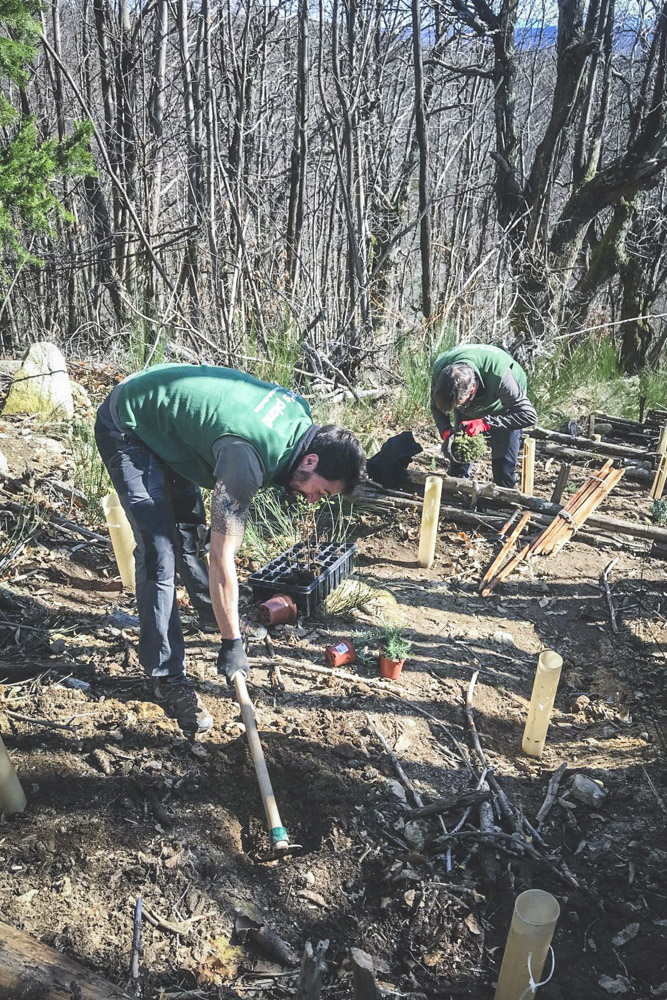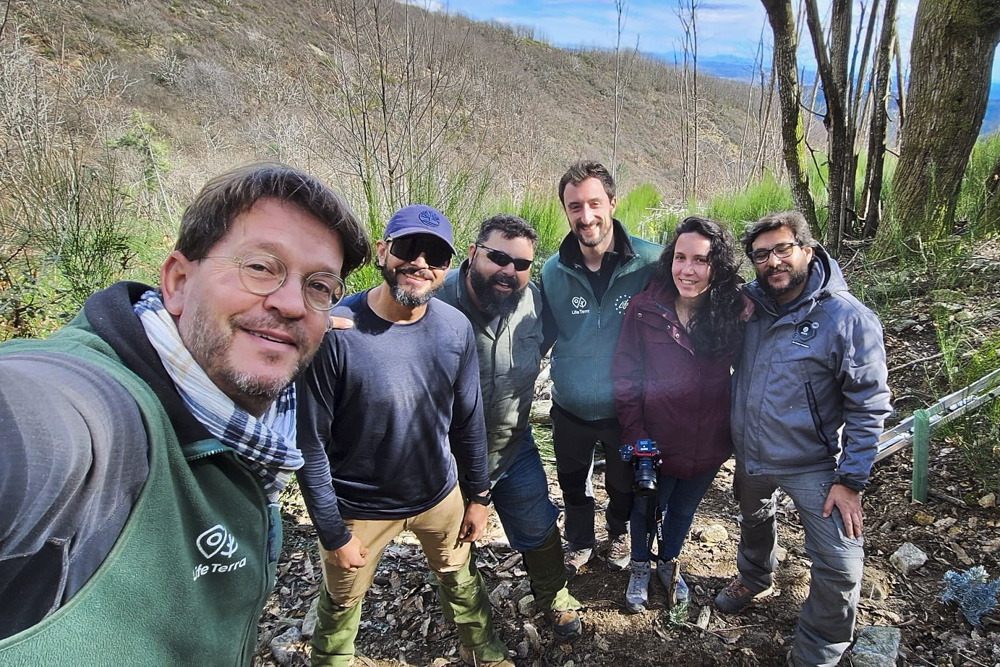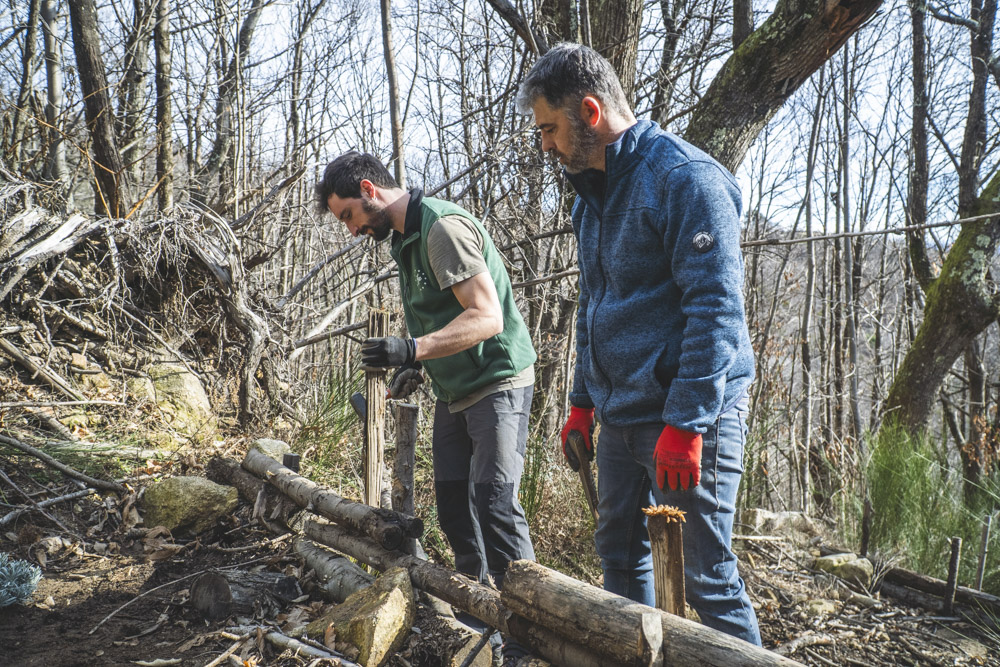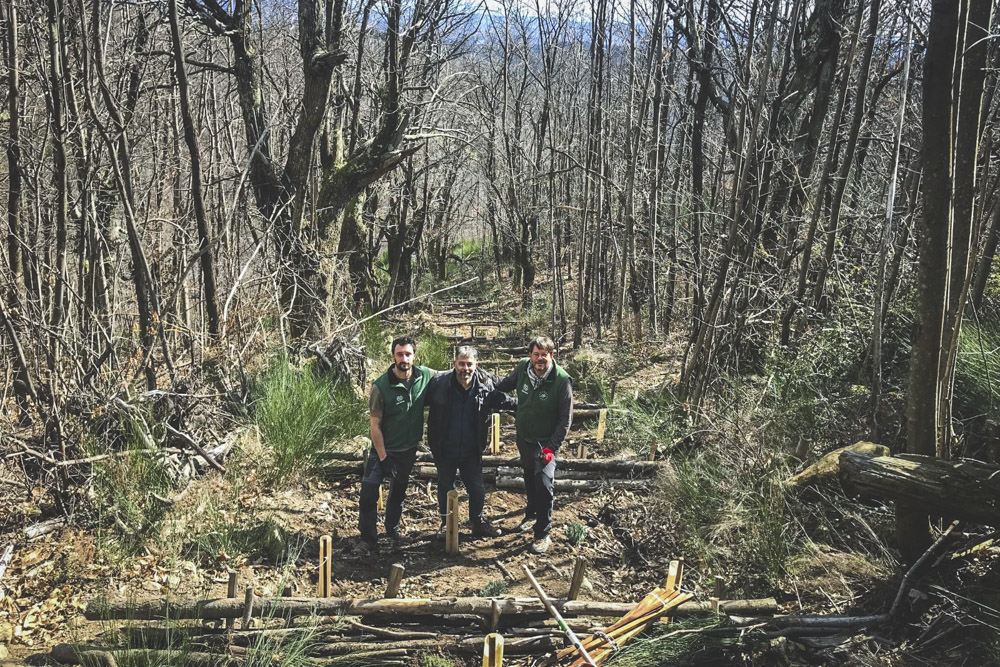A Holistic Approach to Ecosystem Restoration: Monitoring the Lentillères Project in Ardèche, France
On a recent visit to the Lentillères project in Ardèche, France, the Life Terra team collaborated with the ASES team for a monitoring and maintenance session of this ambitious ecological restoration initiative. This project exemplifies the strength of a comprehensive approach, tackling reforestation, soil stabilization, and biodiversity enhancement in one integrated effort.
The Lentillères site, situated on a steep slope, had suffered significant degradation following a clear-cut operation. The removal of trees destabilized the soil, stripping away the root systems that once held it in place and leading to widespread erosion. To address this, Life Terra planted a diverse array of species to restore biodiversity, while ASES implemented an innovative soil retention strategy using fallen logs to create natural barriers. These structures have successfully retained soil during rainfall, allowing sediment to rebuild in areas previously reduced to bare rock.
During this visit, we observed encouraging progress: the erosion control measures are proving effective, and the planted species are growing robustly. Maintenance was performed on the retention structures, and we introduced biodegradable tree protectors to support the young saplings while aligning with sustainable practices. Additionally, we seized the opportunity to plant aromatic shrubs, taking a moment to highlight their ecological significance. These species play a vital role in ecosystem health by attracting pollinators, enhancing soil microbial activity, and contributing to the overall resilience of the habitat.
To further support biodiversity, we installed a Paco Volante nest box, designed to provide secure shelter for insects, bats, and birds, enriching the local wildlife community. The Lentillères project reinforces a critical insight: effective ecosystem restoration requires a holistic and integrated approach. By addressing soil stability, biodiversity, and the inclusion of species like aromatic shrubs that bolster ecological vitality, we can rebuild robust ecosystems poised to flourish. This collaborative effort highlights the potential of innovation and a broad vision to heal degraded landscapes and foster a sustainable future.

